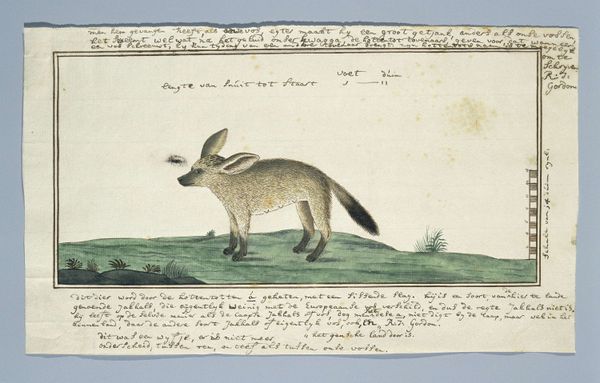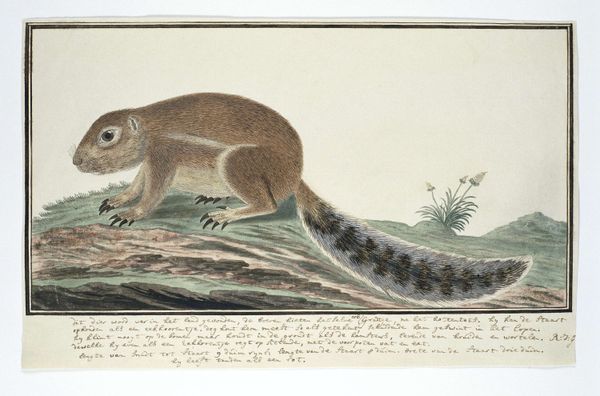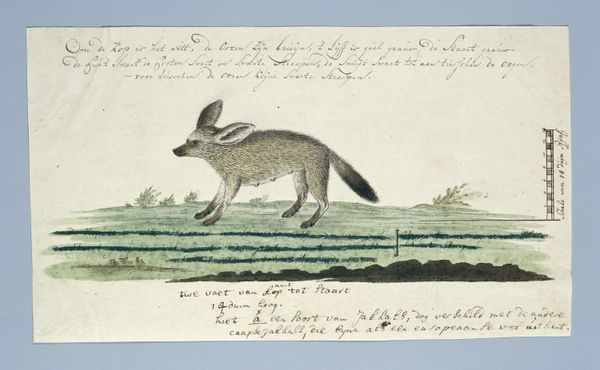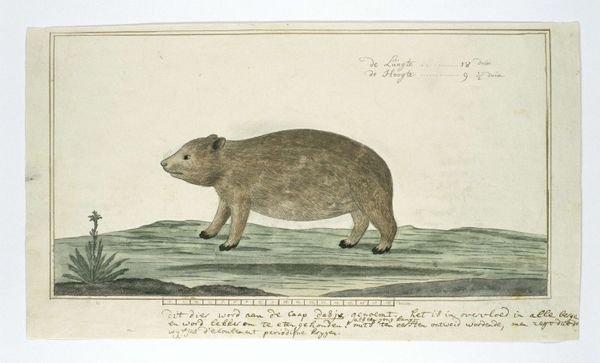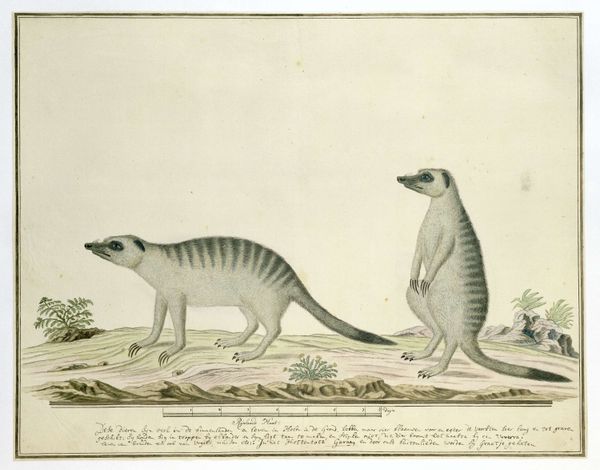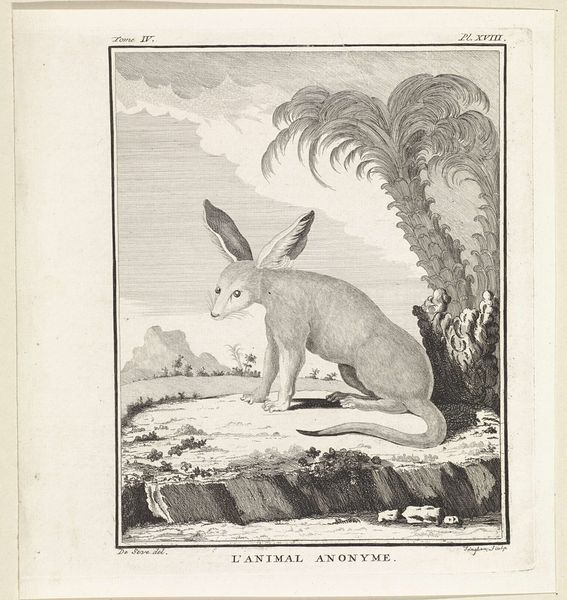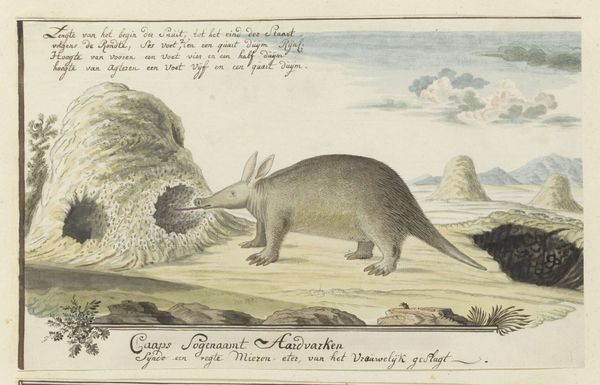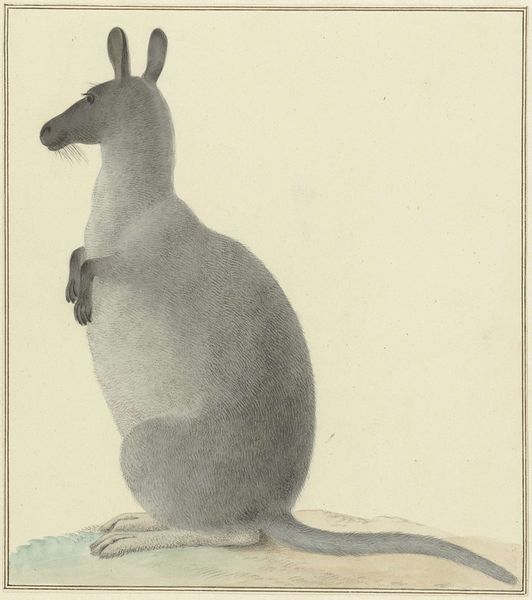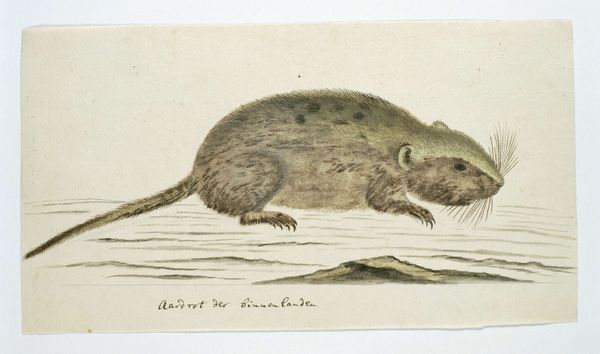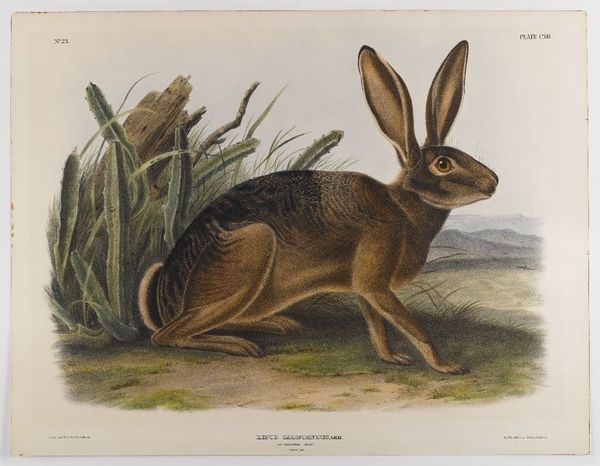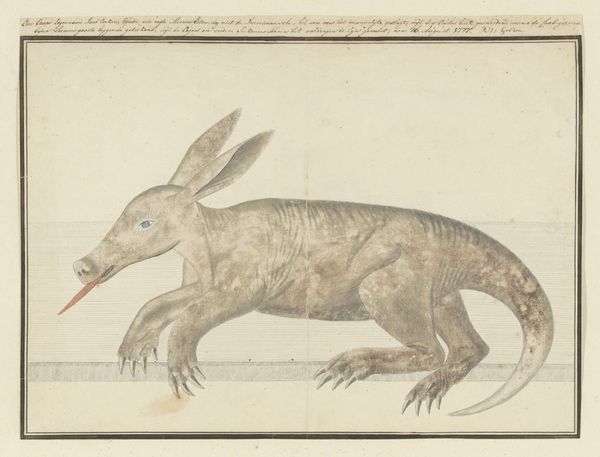
drawing, watercolor
#
drawing
#
animal
#
landscape
#
oil painting
#
watercolor
#
watercolour illustration
#
naturalism
#
watercolor
Dimensions: height 660 mm, width 480 mm, height 230 mm, width 375 mm, height 180 mm, width 346 mm
Copyright: Rijks Museum: Open Domain
Curator: This detailed watercolor and ink drawing presents "Pedetes cafer," commonly known as the South African springhare, possibly created around 1778 by Robert Jacob Gordon. Editor: Immediately, the creature's almost anthropomorphic pose strikes me. It’s as if it's been caught mid-thought, with a contemplative air about it, emphasized by the directness of its gaze and the delicate brushwork defining its fur. Curator: Gordon was a Dutch military officer and explorer, known for his extensive travels and naturalistic documentation of the Cape region. This drawing is one of many illustrating the flora and fauna he encountered, serving both scientific and artistic purposes. It shows the importance of colonial visual representation. Editor: Yes, I'd agree with you. Notice how Gordon meticulously renders the animal's form using fine strokes. The subtle gradations in tone give depth to the fur, while the use of watercolor creates soft, diffused edges. The way the light is rendered emphasizes the texture, almost like capturing the "essence" of springhare-ness. Curator: Beyond its aesthetic qualities, this work provides insights into the complex history of natural history illustration and colonial exploration. These images often served to catalog and claim the resources of newly "discovered" lands. The act of visually documenting the springhare also signifies its place within a broader colonial narrative. Editor: True, yet stripping away that lens, I find beauty in how he depicts form using relatively few lines. The placement of the creature in this minimalist landscape lets us truly focus on the springhare itself. It creates a composition that is strangely satisfying; a successful marriage of scientific illustration and aesthetic simplicity. Curator: Absolutely. Its preservation also reflects shifting collecting practices, where scientific documentation came to be regarded as artworks valued both aesthetically and as documentary heritage. Editor: Indeed, viewing "Pedetes cafer," I appreciate how Gordon melded technical precision with a touch of artistry. It is interesting to consider it today for the formal techniques and cultural value it possesses.
Comments
No comments
Be the first to comment and join the conversation on the ultimate creative platform.

